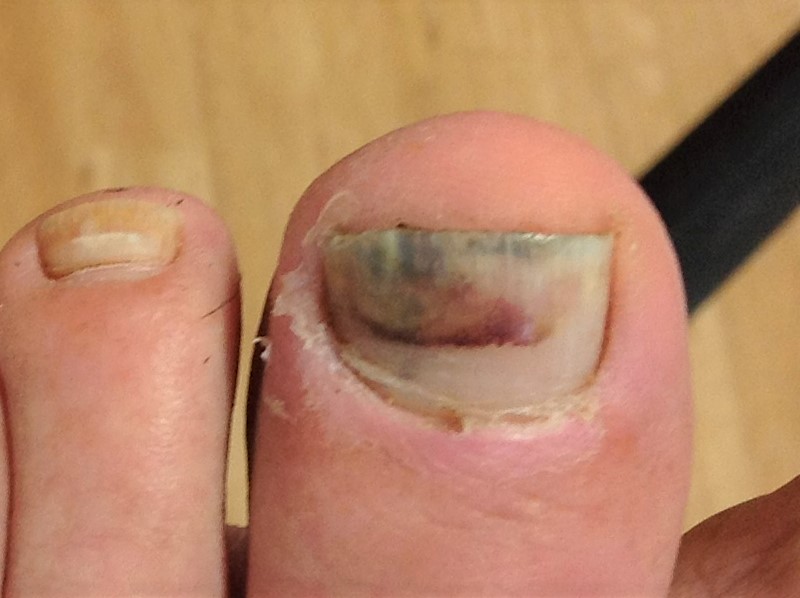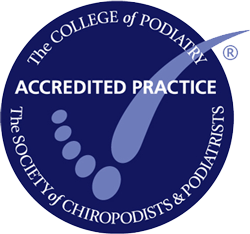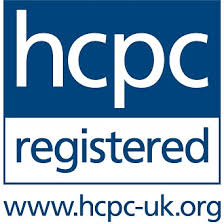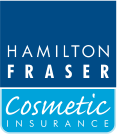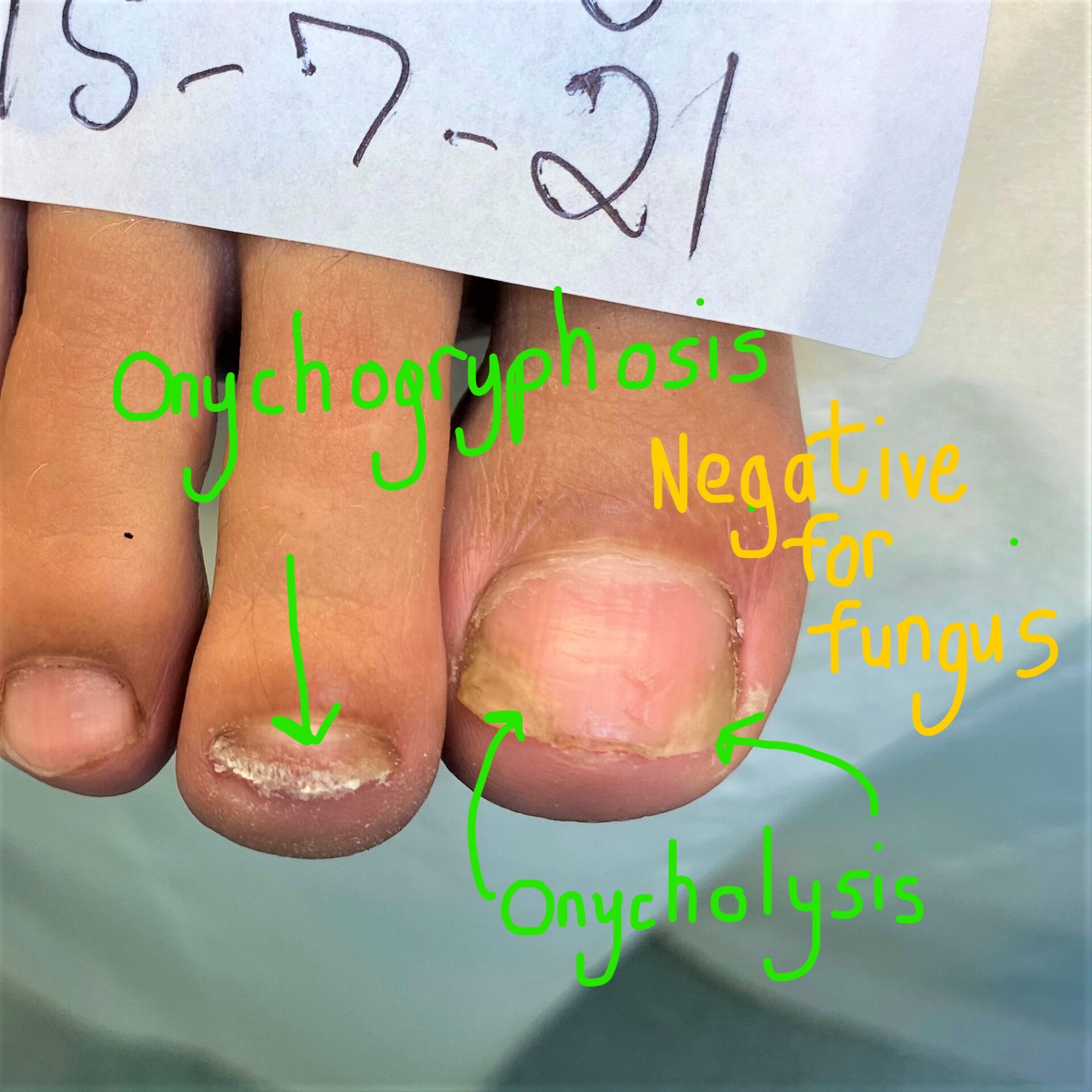
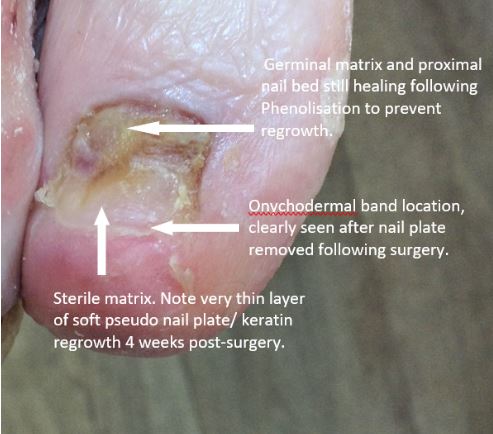
Fixing damaged nails is routinely what podiatrists do on a regular basis. How successful the treatment is, depends on the severity of the damage and what the cause is. Trauma and disease are the main etiological factors. Expert consideration needs to be taken, to assess how irreparably damaged the nail unit is. The nail unit comprises of the matrix, nail plate and bed. The nail plate emerges from the matrix. The matrix helps to firmly adhere the nail plate to the toe or finger as it grows forward. Any damage to nail bed or matrix will allow the nail plate to lift (onycholysis) or have irregularities.
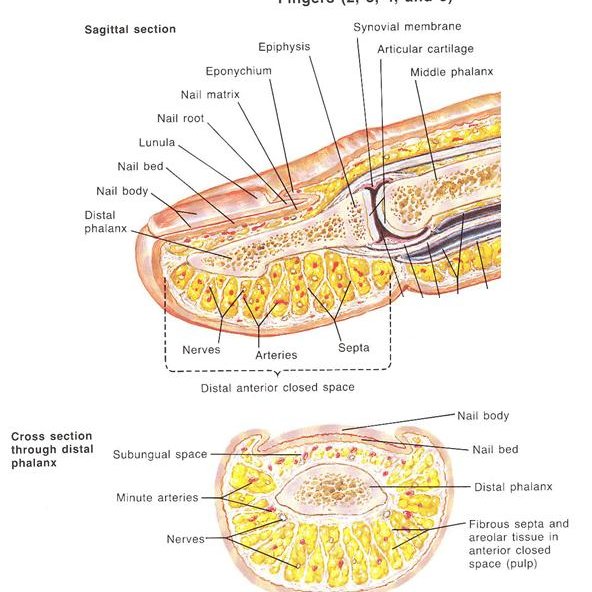
Important to Understand the Nail Unit Anatomy
Understanding nail anatomy is important. A simplified explanation is to think of the nail and bed as an integral unit, like Velcro. Each needs each other to form a firm attachment. As the nail plate grows forward from the base, the germinal matrix, it has the loops and the nail has the hooks. Any disruption to either, it will not attach correctly.
A more in-depth explanation is to look deeper. The nail plate is made up of about 80 layers of flattened keratinized cells. Approximately 90% of cells are produced in the germinal matrix. These cells become more transparent as they grow forward emerging from the cuticle. This is called the eponychium. Attaching this layer of cells to the bed are fine filamentous threads called the nail vest. The nail plate grows forward onto the sterile matrix. Approximately,10% of nail cells are produced here. There are longitudinal epidermal ridges, like corrugated iron which match a similar pattern to the overlying nail plate contributing to a firm attachment. These ridges can be seen when a nail plate is removed.

The nail plate itself is made up of 3 layers; dorsal, intermediate and ventral layers. The intermediate layer is the thickest, most flexible layer. There are approximately 196 rows of compacted keratinocytes.Toenail plates grow on average 1mm a month. Finger nails, grow faster, 3-4mm a month. Nail growth is faster in healthier younger individuals. Damage to the matrix can result in stunted growth for a couple of months. Presence of fungus can significantly retard outward nail growth.
Onychodermal Bands
As if this is not complicated enough one has to be aware of the onychodermal bands. Transverse bands 1-1.5 mm thick at the end of the nail bed. It is the 1st barrier to prevent materials entering underneath the nail plate. If this gets damaged, then the nail plate will start to lift. This is termed onycholysis. If this lifting of the nail plate continues for a long time, then the nail bed tissue structure changes.
It is important to note that the nail bed lacks certain keratin proteins found in the skin. It is different to skin and hence heals differently. If it does not heal correctly, it will lose it’s filamentous structures; it’s Velcro effect, and become keratinsed, smooth like normal skin. The nail plate will not reattach itself.
Pseudo Nail
It is often observed when a nail plate comes off, either by trauma or surgery, the quick formation of what looks like a new nail. This can confuse both patient and podiatrist. Nail plates can take many weeks to grow out from the matrix. This is not a proper nail plate. It is thin and irregular. It is composed of nail cells, keratin and scar tissue. It is formed by the sterile matrix which produces 10% of a nail plate. It is a ‘pseudo’ nail. The true nail plate will grow forward over this, but it can cause disruption to it’s shape and integrity.
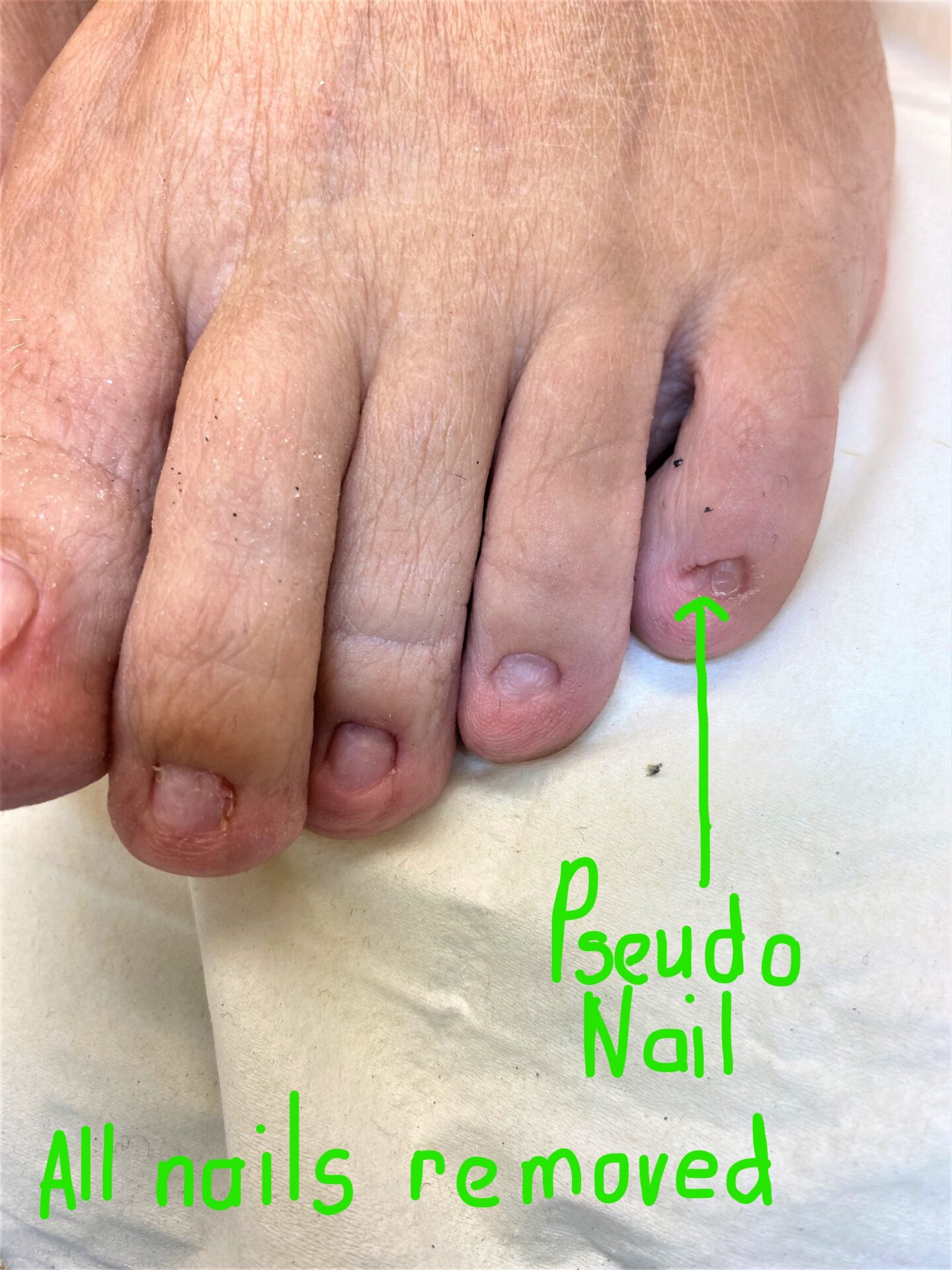
Speed is the Essence to successfully Fixing Nails
The reader can now start to appreciate what a complex structure the nail unit is. If a nail comes off it will grow back. How well it does depends on the extent of the damage done to the nail unit. The secret to fixing a damaged nail is to treat it quickly. The quicker the better.
Traumatised, damage nails need correct management to allow nail plate to grow forward without defects. Invading nail fungus (onychomycosis) needs eradicating with haste. Any breaks, lifting in the plate need to be speedily treated. The enemy to a poorer outcome is wasted time.
Fixing Trauma Related Damaged Nails
Acute Presentation – Nail plates damaged through direct trauma.
Initially any blood under the nail plate (subungual haematoma) can be drained if painful. This will release pressure. Alternatively, it can be left. Will discolour nail plate and eventually grow out. If nail plate is totally loose, it is best to remove it to prevent later catching. Deep lacerations sutured. Careful wound management applied, followed by careful post trauma care:
- Recondition Nail Bed
Encourage new nail plates to grow forward without defect. Ensure damaged nail bed is reconditioned; massaged daily and push nail folds out to stop retraction. Massaging in Pure Rice Bran Oil can help to nourish the nail bed. Applying Vaseline can act like a barrier and help to soften.
Be mindful of checking surrounding skin for signs of Athletes Foot infection. Treat accordingly with topical antifungals. Avoid invading opportunistic dermaphytes entering the new nail plate by stealth. Do not apply nail varnish until nail plate fully grown out.
- Lunula Laser to Accelerate Healthy Growth
The application of the Lunula Laser will optimise good results. The Lunula Laser is FDA cleared to accelerate healthy new nail growth. Remember speed is favoured for good outcomes. A slow returning nail plate is vulnerable to additional damage and fungal invaders.

- Corrective Nail Braces and Plates
Thickening nails must be reduced and shaped. If the nail starts to ingrow a corrective brace can be applied to lift up the distal edges, e.g. Onyfix. Pronounced nail fold retraction can be addressed with a UV set prosthetic gel nail.
- Avoid Additional Trauma
Fingernails must be protected from excess water submersion or mechanical stress. Advise wearing gloves when doing dishes and for manual work.
Toenails must be protected from shoe pressure and mechanic micro-trauma. Good fitting footwear is advised, e.g. deeper toebox, softer uppers. Open toed footwear is beneficial.
- Check Out Biomechanics
Poor foot biomechanics can contribute to damaged toenails. If toes claw, hyperextend, lock (big toe), splay when walking, this should be reduced with wearing functional orthotic insoles. A podiatrist can advise on this.
Chronic presentation
Nails which have been damaged for some time.
- Thickened and deformed – These nails should be reduced in thickness and kept short to reduce micro-trauma. Thicker nails can lift damaging the onychodermal bands.
- Fungal infected – Eradicate the infection.
Newly infected nails can be treated conservatively with Lunula laser, Clearanail micro-drill (lacuna therapy), topicals and oral medication.
Older chronically infected nails respond less favorably to conservative methods. Re-infection rates are high due to trapped deeply embedded fungal spores. Patients are advised to have infected nails surgically removed to effectively treat entrenched spores and restore damaged nail beds. These damaged nail beds can be reconditioned to offer some improvement in appearance. Fibrous, damaged nail bed tissue can be excised which helps to flatten the nail plate out as it grows forward.
- Splits – If splits are new, protect nail plate with varnish or a prosthetic nail e.g. Wilde-Pedique. Older splits can sometimes be corrected by surgically removing the nail plate and excising the fibrous scar tissue.
- Involuted, pincher, ingrowing nails
Conservative – Apply corrective nail braces (Onyfix) over a period of time, up to 36 months to pull up sides of nail plate. Packing the nail folds (sulci) with cotton wool to push out sides. Massaging and pushing out the nail folds with a cuticle oil or nail softener can also help.
Surgery – Surgically remove the involuted sides of the nail and phenolise. Phenolisation requires applying a chemical called phenol into the nail matrix to destroy relevant nail cells. Nail plate grows back narrower.
- Lifting, onycholysis – Treatment success depends on how long nail has been lifting and cause.
Conservative – Reduce nail thickness. Careful not to cut deeply down sides or push file underneath the plate to lift it further. Applying a UV prosthetic gel nail may help to pull nail forward and protect it.
Tape down end of toe to stop fleshy part of toe pushing nail plate up or down. Wear correct fitting footwear, protective gloves for hands, check out biomechanics.
Surgery – Remove damaged nail plate and recondition the nail bed. Excise any scar tissue. Use Lunula to encourage quick healthy nail growth.
Conclusion
Finger and toe nails are complex structure. When damaged they cannot just be glued back on or thinned and hope for the best. A nail is a strong structure withstanding much mechanical stress, but paradoxically a delicate one too. A hard boiled sweet with a soft centre.
This article has concentrated mainly on nails damaged by trauma and fungal nail disease. Good results, improvement can be achieved by podiatrists for these presentations. Other damaging nail pathologies caused by underlying inflammatory disease like lichen planus and psoriasis are harder to treat. If there is a deeper lying reason for why a nail plate lifts such as a bony growth termed a subungual exostosis, this has to be surgically removed. Other more serious presenting nail conditions like malignancies need to refer on.
A podiatrist can help to identify problems and offer expert advice. Unfortunately, not all damaged nails can be restored to smooth thin nail plates. Patient expectations need to be managed carefully.

